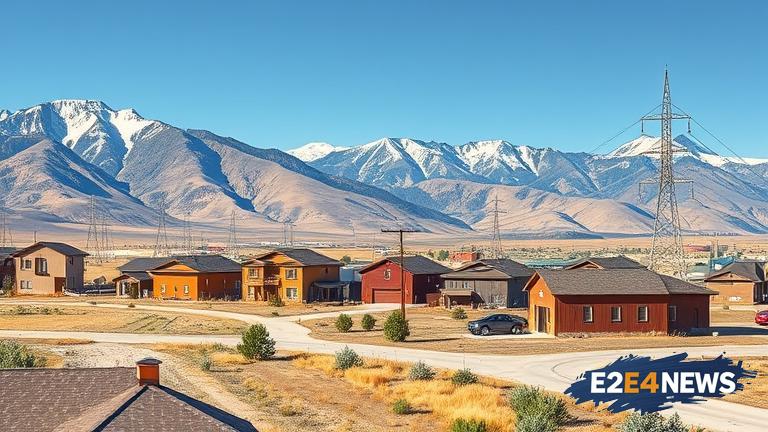A recently announced AI data center in Wyoming is poised to become one of the largest consumers of electricity in the state, with estimates suggesting it will use more power than all of Wyoming’s residents combined. The data center, which will be used to support artificial intelligence and machine learning applications, is expected to require a significant amount of energy to operate its servers and cooling systems. This has raised concerns among environmentalists and energy experts, who are worried about the potential impact on the state’s energy grid and the environment. The data center is being built by a tech company that specializes in AI and machine learning, and is expected to create hundreds of jobs in the area. However, the project has also sparked controversy, with some critics arguing that the energy consumption will outweigh any economic benefits. Wyoming is already a major producer of fossil fuels, and the addition of a large energy-consuming data center has raised questions about the state’s commitment to reducing its carbon footprint. The data center is expected to be powered by a combination of renewable and non-renewable energy sources, but the exact mix has not been disclosed. Some experts have suggested that the data center could be powered entirely by renewable energy, such as wind or solar power, which would significantly reduce its carbon footprint. However, others have argued that the cost and logistics of transitioning to renewable energy would be too great. The project has also raised concerns about water usage, as data centers require significant amounts of water to cool their servers. The data center is expected to use millions of gallons of water per year, which could strain local water resources. Despite these concerns, the project has been welcomed by local officials, who see it as an opportunity to bring in new jobs and revenue. The data center is expected to be completed in the next few years, and will be one of the largest in the country. The project has also sparked interest in the potential for Wyoming to become a hub for AI and machine learning development, with several other tech companies expressing interest in building data centers in the state. However, the environmental and energy implications of such a development are still unclear. As the project moves forward, it is likely that there will be ongoing debate and discussion about the potential impacts and benefits. The data center is just one example of the growing demand for energy-intensive computing power, which is driving the development of new data centers around the world. As the use of AI and machine learning continues to grow, it is likely that energy consumption will become an increasingly important issue. In response to these concerns, some companies are exploring new technologies and strategies for reducing energy consumption, such as using more efficient servers and cooling systems. Others are investing in renewable energy sources, such as wind and solar power, to reduce their reliance on non-renewable energy. The development of the Wyoming data center is a significant milestone in the growth of the AI and machine learning industry, and will likely have important implications for the environment and energy usage in the years to come. The project has also highlighted the need for greater transparency and accountability in the tech industry, particularly when it comes to energy consumption and environmental impact. As the use of AI and machine learning continues to grow, it is likely that there will be increasing scrutiny of the industry’s environmental and energy practices. In order to mitigate the potential impacts of the data center, it is essential that the company and local officials work together to develop strategies for reducing energy consumption and minimizing environmental harm. This could include investing in renewable energy sources, improving energy efficiency, and implementing sustainable water management practices. By taking a proactive and responsible approach to energy and environmental management, it is possible to minimize the negative impacts of the data center and ensure that it is a positive development for the local community.
